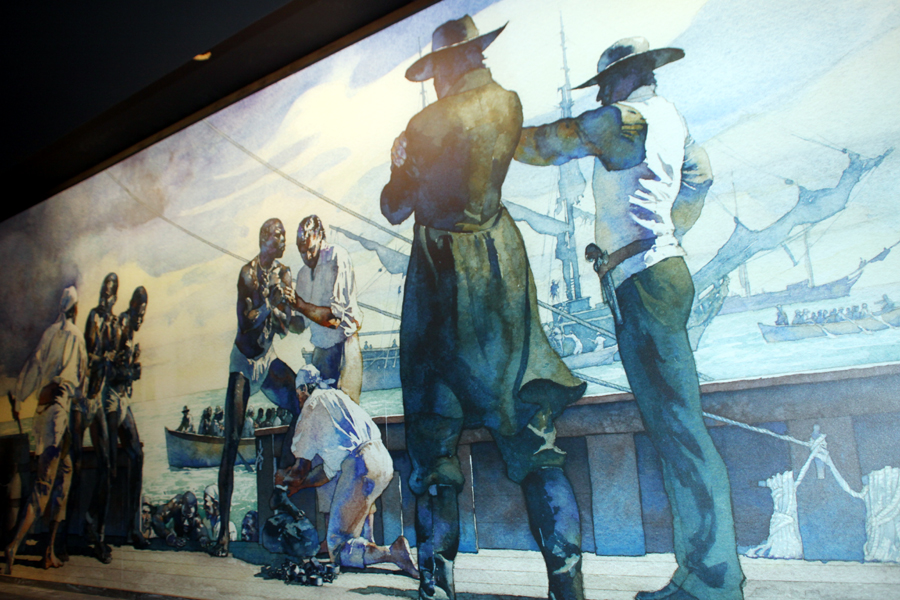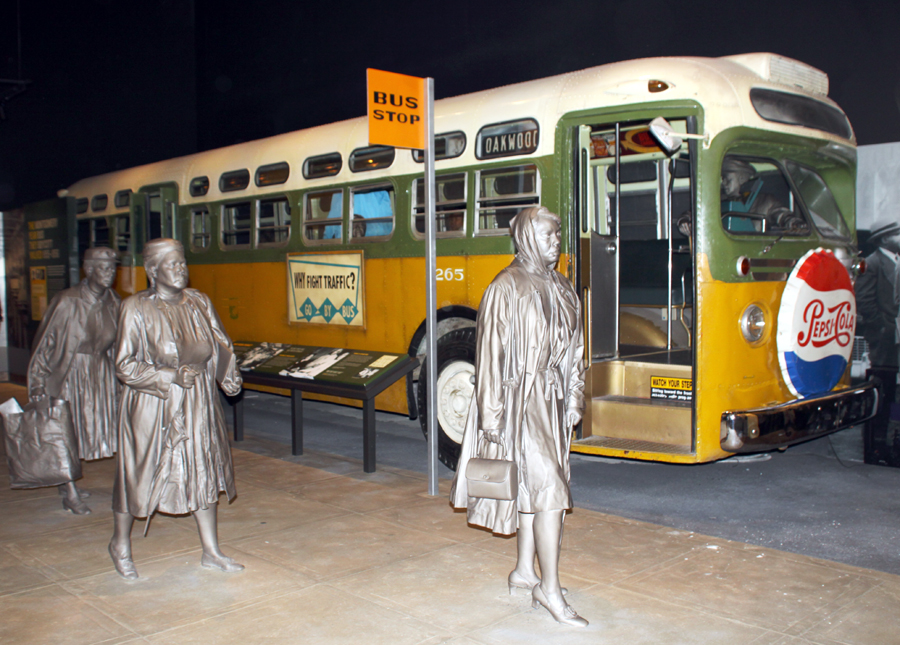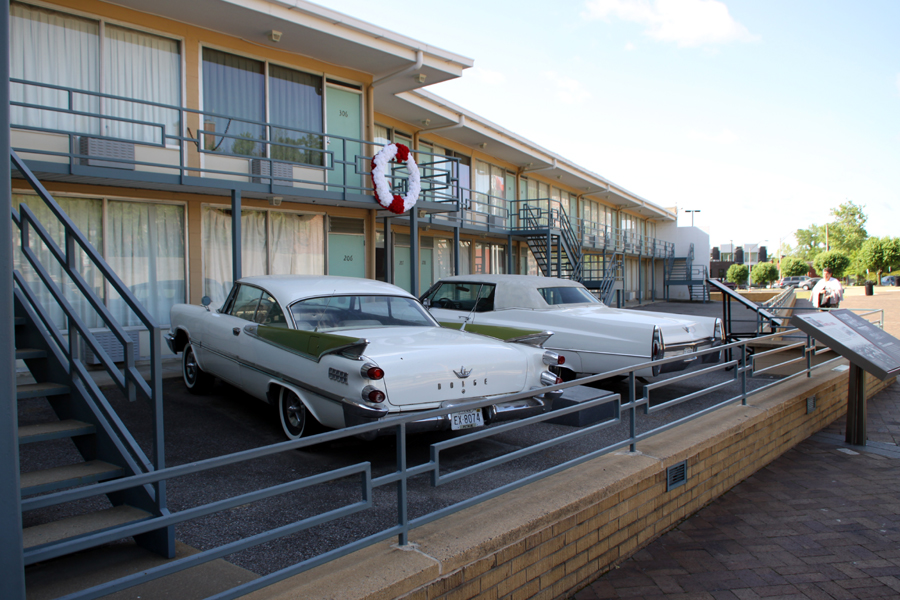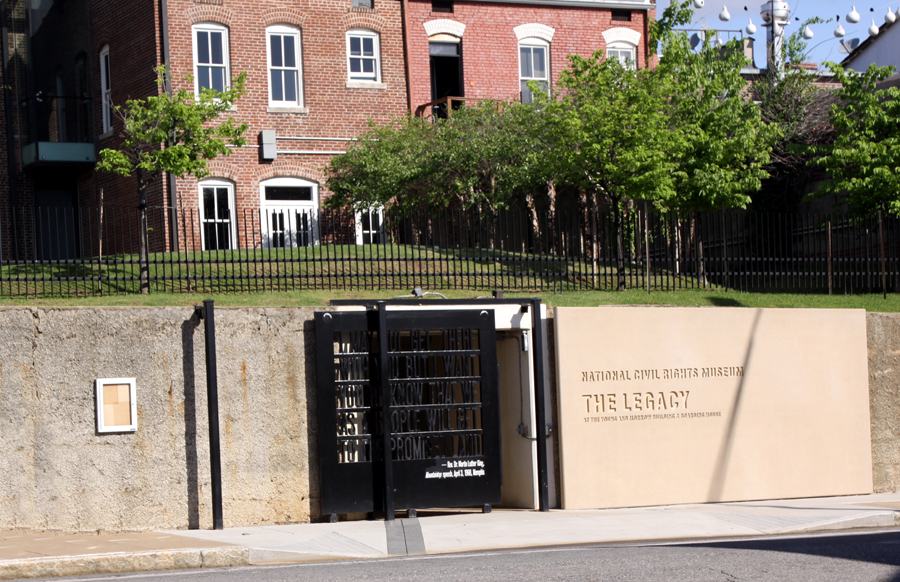 Today, the old motel tells a different story. It has
metamorphosed into the National Civil Rights Museum. The former
boarding house where James Earl Ray stayed and from where he
fired the fatal shot is now the Legacy Building. The entrance is
a timeline up until Dr. King's assassination and provides a
detailed timeline of the movements of both Dr. King and James
Earl Ray in the days leading up to the assassination until Ray's
capture.
 |
Part of the exhibit showing the
slave ships
|
The focus of the museum is broader than
just Dr. King's assassination. It tells the whole story of
hatred and cruelty directed at African Americans but it also
shows the progress of Civil Rights in our society. As you enter
the museum, it takes you visually through the horrific Middle
Atlantic Passage right up through the election of Barack Obama
as the first African American president.
 |
| The bombed-out Greyhound bus |
For me the most poignant exhibit was "We
Are Prepared to Die" with its twisted and still smoking
Greyhound Bus offering a glimpse of what the young Freedom
riders faced in the 1960s. The Student Nonviolent Coordinating
Committee (SNCC) recruited hundreds of young men and women
willing to put their lives at risk for freedom to ride public
transportation regardless of race.
 |
| Rosa Parks exhibit |
Another favorite of mine is the Rosa Parks
exhibit. It had a very realistic replica of the bus that Rosa
Parks rode in Montgomery. You can step on the bus to trigger the
soundtrack about the Montgomery boycots and Dr. King's emergence
as the leader of the African American struggle for their
equality.(Click
here for more about Rosa Parks)
 |
| Dr. King's room at the Lorraine
Motel |
The museum exhibit "King's Last Hours"
shows where Dr. King stayed in Room 306. The room looks like a
simple motel room rather than a milestone in the fight for
equality among the races but it contains a lot of hidden
meaning. Dr. King was staying at this particular motel because
he was not welcome at most of the Memphis motels which had a
strict segregation policy. The motel had served many of the Stax
Records musicians
(click here for more about Stax and Memphis's music history)
including Ray Charles, Ethel Waters, Aretha Franklin, Otis
Redding, Lionel Hampton, The Staple Singers and Wilson Pickett.
The day before the assassination Dr. King
made his prophetic "I've Been to the Mountain Top" speech where
he foreshadowed his own assassination. "And then I got to
Memphis. And some began to say the threats... or talk about the
threats that were out. What would happen to me from some of our
sick white brothers? Well, I don't know what will happen now.
We've got some difficult days ahead. But it doesn't matter with
me now. Because I've been to the mountaintop. And I don't mind.
Like anybody, I would like to live a long life. Longevity has
its place. But I'm not concerned about that now. I just want to
do God's will."
 |
| The motel exterior |
A wreath marks the place Dr. King was shot
on the second floor balcony. Just below two vintage automobiles
are parked. They are not the actual vehicles driven by Dr. King
or his entourage but they set the time frame nicely. As you
approach from he parking lot you feel you are stepping back in
time to that fateful day.
 |
| The old boarding house where
James Earl Ray stayed is now The Legacy |
The museum opened in 1991 and closed
temporarily in November of 2012 to facilitate a $27.5 million
renovation. When it reopened in 2014, it offered 40 new films,
oral histories and interactive media added to the original
material. The museum has been featured on the History Channel
and CNN and in USA Today. From tragedy has come a tragic tale
well told at the Lorraine Motel. It is one museum every American
should see.
For more info:
http://civilrightsmuseum.org
|